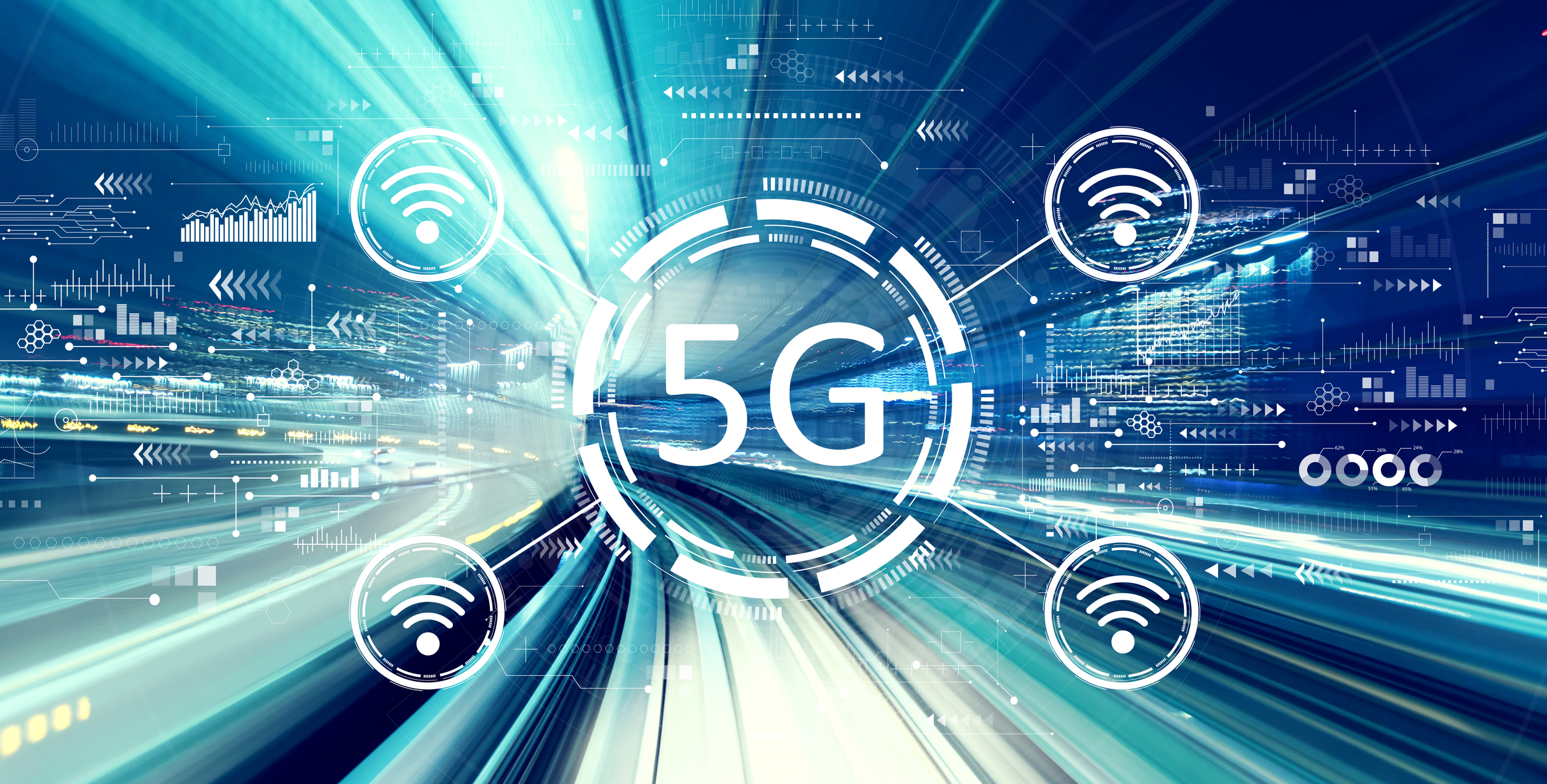When you think of 5G and IoT (Internet of Things) have the potential to drastically change everything we see around us, including further interconnectedness of smart homes; advances in the way medical, financial, and other services are delivered; further automation of retail environments and manufacturing processes. IoT continues to grow exponentially; IDC predicts 152,200 connected devices added every minute by the year 2025.
In this article, we are going to take a deeper look into how IoT and 5G are working together to shape how we work and live.
Because embedded and IoT systems often include small, low-power sensing devices, we tend to focus on the smaller end of the data transmission spectrum. Narrowband IoT (NB IoT) is a wide-area network radio technology that uses low power to support a variety of cellular devices. LTE Cat M1 stands for Long-Term Evolution, category M1. This technology allows IoT battery-operated devices to connect directly to the 4G network, without a gateway. Both of these methods can’t send large volumes of data, but are appropriately (and extremely) inexpensive. Most IoT individual edge devices transfer small amounts of data.
5G, on the other hand, can transmit large volumes of data.
What is 5G?
5G is the fifth generation of cellular network technology. This leap in wireless technology is creating ultra-fast, high-volume data transmission on a massive network scale that is already changing the way consumers, businesses, and governments operate and interact.
5G dramatically outperforms 4G because it uses three different spectrum bands instead of just one, and uses those bands to deliver a Wi-Fi signal through an increasing number of towers and transmitters. Currently most 5G networks mostly rely on 4G towers right now, but that’s changing.
Current statistics about 5G include:
- More than 10x faster than 4G (up to 20 gigabits per second)
- Supports 100x increase in network efficiency
- 200x lower latency rate (less than one millisecond in later releases, versus 20 to 40 milliseconds for typical Wi-Fi deployments)
While previous cellular network generations focused primarily on creating faster broadband speeds for mobile devices, 5G takes a more comprehensive approach towards expanding the entire mobile ecosystem beyond smartphones and tablets.
5G technology allows for faster throughput and more bandwidth, connecting both static and mobile sensors and devices outside of the traditional mobile network. The speed allows for reliable, low-latency machine-to-machine communication and real-time applications such as augmented and virtual reality for health care, manufacturing, and education.
The implementation of 5G networks is a massive project in progress. Each country is still working on building the infrastructure to support this global network. Even tech giants like Apple are just now making iPhones (the new iPhone 12) that can use 5G.
As we’ve written about before, one of the more interesting developments involves engineers from the Georgia Institute of Technology, who have figured out how to convert the overcapacity inherent in 5G networks into power, creating a “wireless power grid,” eliminating the need for batteries.
Wi-Fi vs. 5G
Unlike Wi-Fi, which relies on an unlicensed spectrum that is free, 5G relies on licensed frequency bands.
In order for these large cellular networks to roll out adequate coverage for their massive networks, they have to pay for these spectrum bands or else they can’t get coverage to thousands of people in a single area or region.
Currently, Wi-Fi is best used for localized applications, such as within homes and buildings. However, as more packets share channels, interference can become a problem.
5G promises wider coverage at high rates of transmission. One example of this is Starlink, which is owned and operated by SpaceX. One of Starlink’s greatest missions is to put enough satellites into orbit so they can provide 5G to people in remote communities in Africa. “Less Developed Countries” (LDCs) will be able to have access to free, stable, and even fast internet. When you think about it, this is an incredible advancement considering only half of the world’s population has access to the internet.
5G and IoT
Data transfer speeds are important when it comes to IoT devices, because a sensing device may be communicating real-time data to a controlling system. Since 5G is expected to be at least 10 times faster than the current “link goes to” (LGT) networks, interconnectivity will be much more efficient across the board. Some of the greatest effects 5G connectivity will have on IoT devices are the following:
- Connection density
- Decrease in latency
- Spectrum efficiency
- Experiences throughout
- Traffic capacity
- Network efficiency
IoT devices are already becoming ubiquitous. They can sense the number of bottles left on a retail shelf. They can tell the manufacturer of a hand-held device when that device needs maintenance, and also feed data back to the manufacturer about usage trends. They can make medical devices much more reliable. They can make transportation systems safer. Forced into adopting technology in order to survive COVID, restaurants are getting a lot smarter.
With the significant increase in bandwidth and internet speeds, 5G will be able to support larger amounts of data being transferred from devices to system controllers.
5G and IoT Sensors
There’s a lot happening in IoT technology in 2021. Wearable tech is taking off; machine learning and AI algorithms are being used in even small, low-power devices; battery technology is making new configurations possible; and buildings are going green with energy-saving devices.
And, of course, there are the self-driving vehicles such as those manufactured by Tesla. Someday, we may live in a world where we all have driverless cars that are communicating with one another to navigate through traffic, increase performance, and ultimately avoid accidents. With 5G, the sensors in these cars will be able to connect to one another faster, ultimately giving traffic control a much-needed makeover.
Since IoT sensors use cloud connectivity to talk to one another, inefficiencies such as lost connections between devices will improve as 5G networks are implemented.
More consumers are using smart products in their everyday lives. As 5G networks expand, we can only expect this interconnectivity to grow. For consumers, some of the most popular IoT devices are in the following industries:
- Wearable technology (e.g., Fitbit & Apple Watch)
- Smart home devices (Nest, Amazon Echo, Smart Locks)
- Bluetooth speakers
Smart home systems include Google’s Nest Hub (currently on the 2nd generation) and Amazon’s Echo Show 8. Both combine a voice-enabled assistant used to control home devices, watch videos, get cooking help, and display photos. (Amazon’s Echo also includes a webcam and video chat functions, and a full browser.) Nest Hub has some new sensing abilities; you can control it with body motion as well as voice.
What is GSMA?
The GSMA Association is the largest network of mobile operators in the world, with more than 750 mobile operator members and an additional 400 companies as associate members. The gal of the Global System for Mobile Communications is to unite mobile operators while both supporting and promoting them.
GSMA is working to develop unique business use cases for 5G with the objective of having 5G cover at least one-third of the world’s population. GSMA is essential to proper implementation of 5G globally.
IoT and Data Security
As with most sectors of technology, the security of IoT devices and networks is critical. IoT networks obviously include a “physical” component that presents an additional opportunity for an attack.
We are well aware of the vulnerabilities of IoT devices, which is why we build security into every system at all stages of the development process. As we mentioned in a previous article:
“An IoT sensor in your HVAC system may not appear to be something that requires stringent security protocols, but it does. That sensor is connected to your network. If someone gains access to it, they can get into your main network and wreak havoc. There have been a number of high profile breaches that occurred this way. The bottom line is every component of an IoT system or application demands rigorous security measures.”
Types of attacks include:
- Ransomware, where an IoT device is taken hostage
- Pivot Points, where the attacker uses the IoT device to gain access to the larger network
- Supply Chain Attacks, where the less-secure point in the supply chain is exploited
- Over-theAir (OTA), where hardware, firmware, or software settings are modified remotely by an attacker
At the end of the day, security must be built into your IoT devices and networks, so that your software, firmware, hardware, systems, processes, data, and—most importantly—your customers are secure and safe from threats and vulnerabilities.
A More Connected World
While we might not have 5G networks rolled out as fast as we would all like them to be, they are coming. IoT devices have been around for decades but have only been widely adopted by smaller companies and consumers in the last decade or so. At the core of all of this connectivity is the need for security and a strong, intelligent team capable of helping build and implement their solutions. This is how we will build the best IoT devices possible, which will run on the world’s fastest networks.

